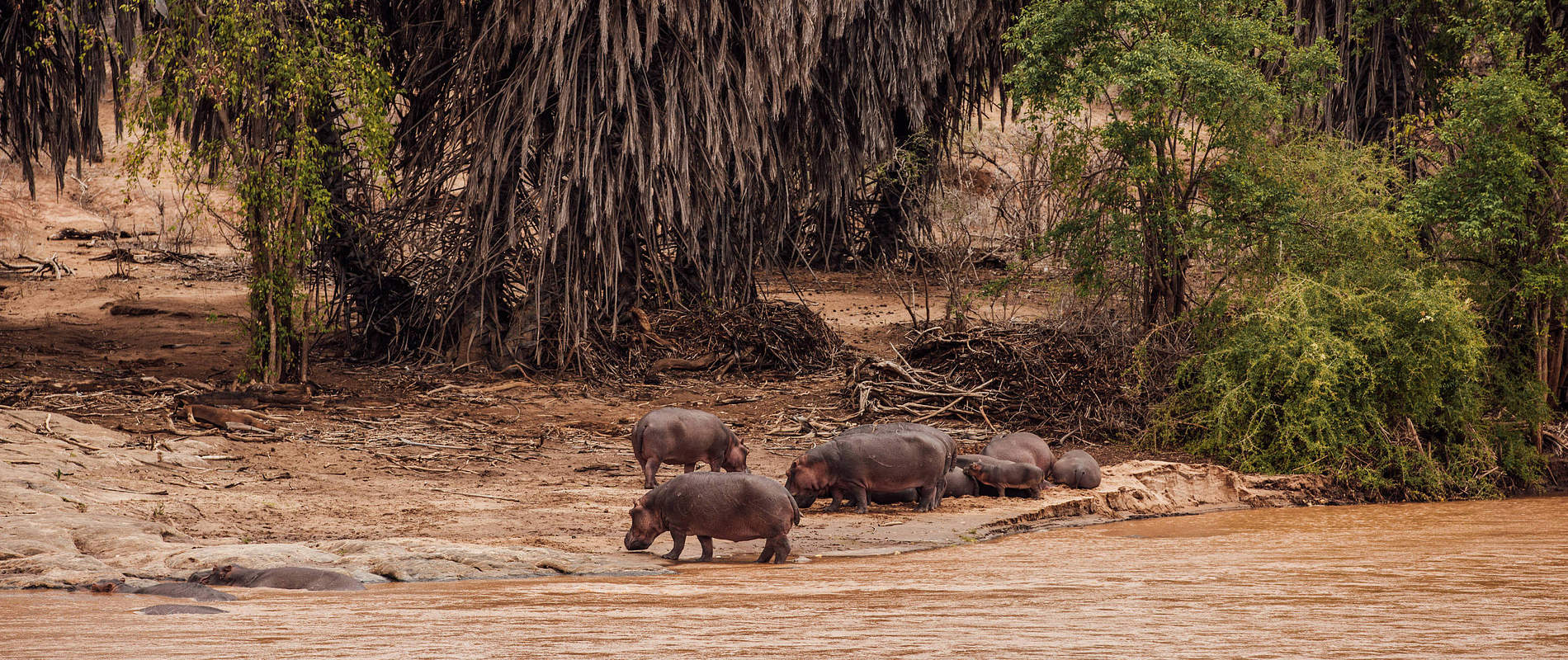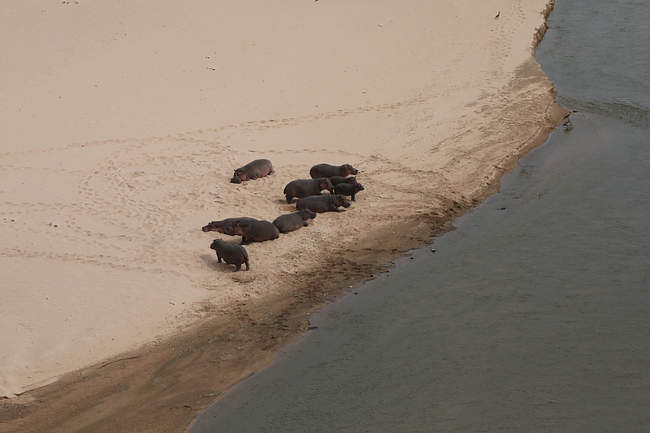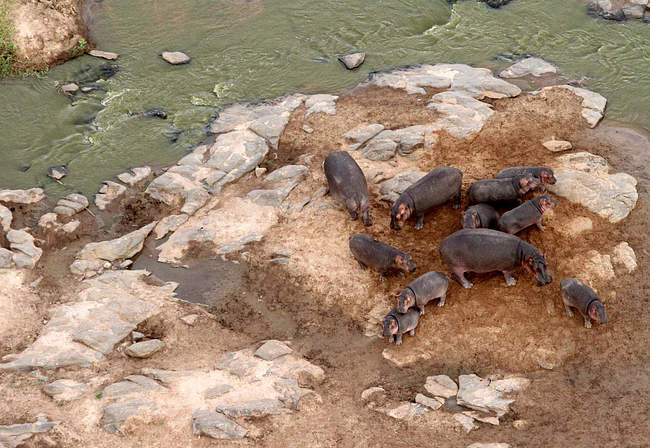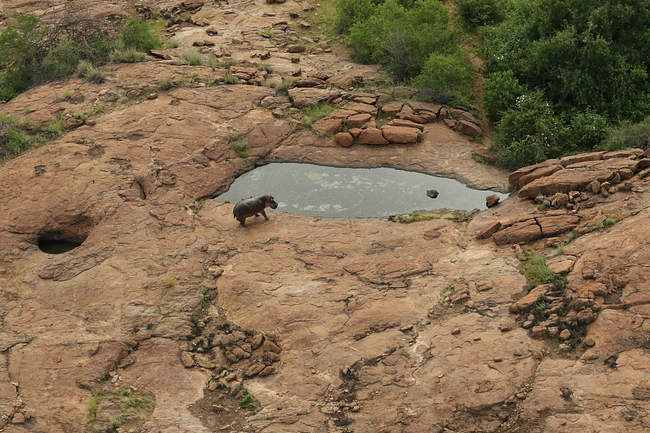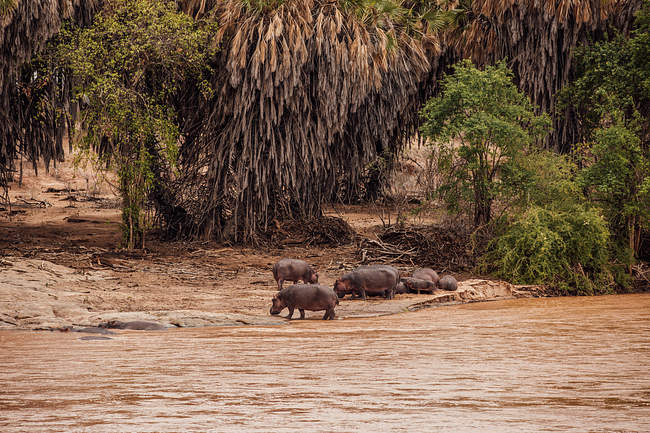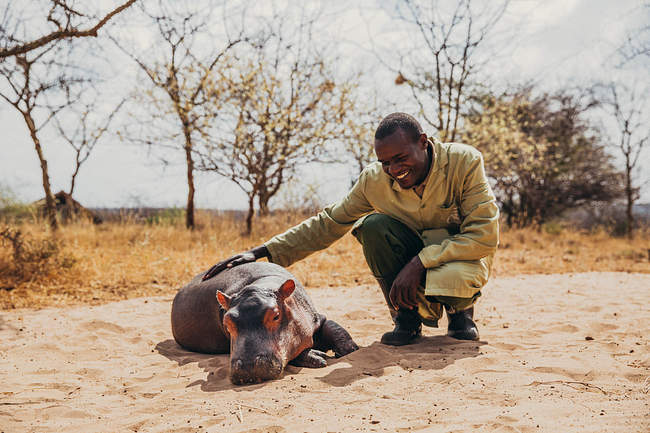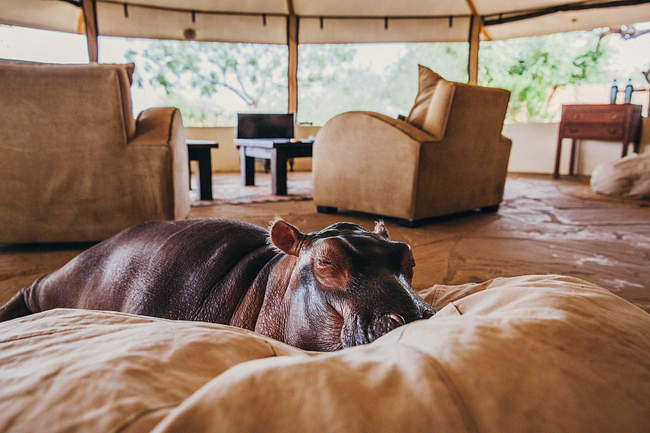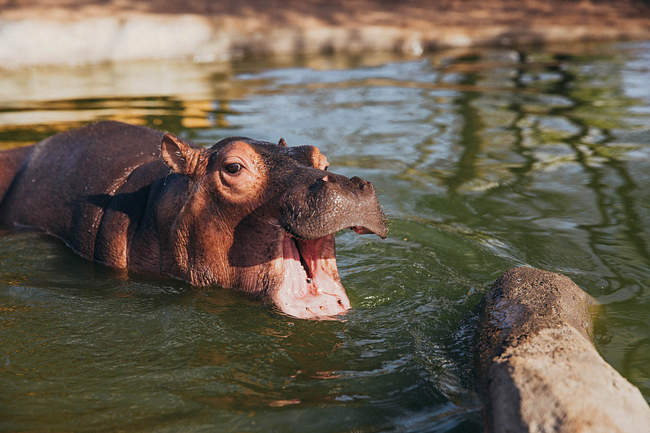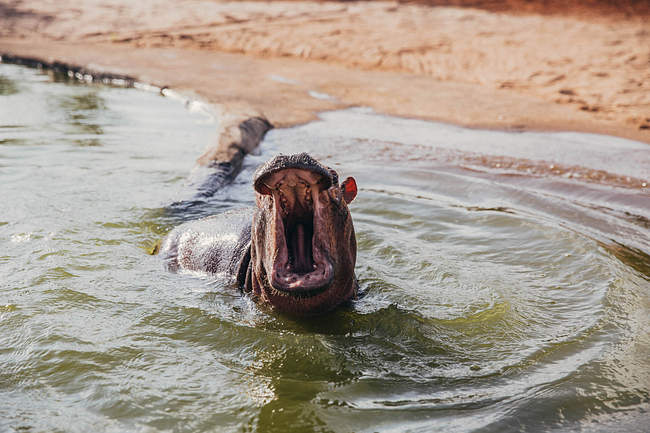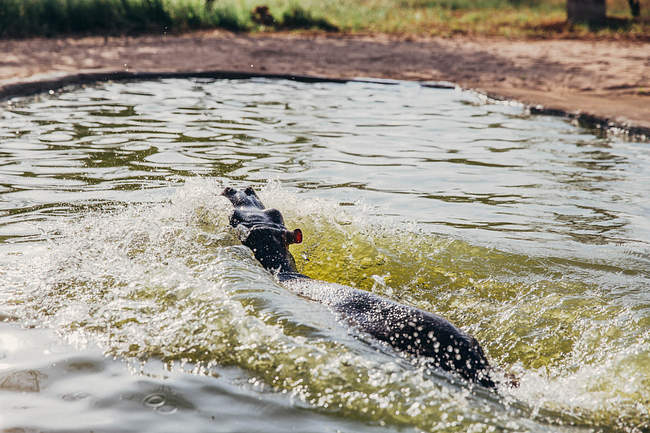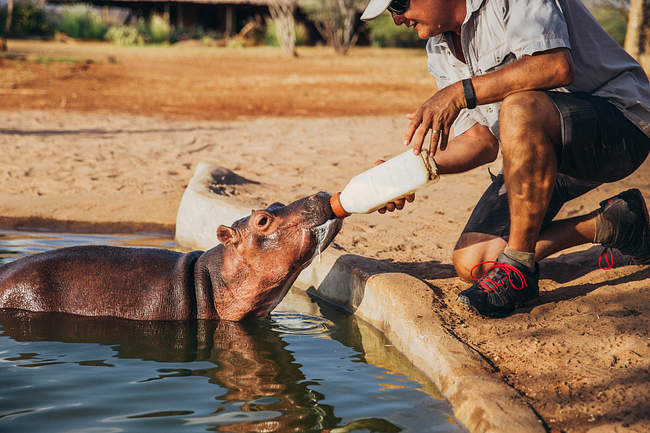The hippopotamus inhabits both of Tsavo’s permanent rivers, the Athi and Tsavo rivers, and occasionally several waterholes, both natural and manmade. They are wonderfully adapted to life in the water and are in fact thought to be closely related to whales and dolphins.
Their eyes and nostrils are located on the top of their head, allowing them to submerge almost completely in the water. When they do go underwater, their nostrils automatically pinch closed and a thin layer of skin protects their eyeballs, allowing them to see underwater. Once under, they can hold their breath for five minutes and use their partially webbed feet to swim or run along the bottom at speeds of up to 5 mph (8 kph). Perhaps unlike their oceanic relatives, hippos have very thick skin – around 2 inches – and a relatively thin layer of subcutaneous fat. As an added layer of protection, they have glands under the skin that produce a pinkish oil, which absorbs UV radiation, protecting against the sun, as well as having antibiotic properties. As well-adapted to life in the water as hippos are, they also spend a significant amount of time on land.

While in water, hippos do a great deal of sleeping and resting. In the evening, however, hippos leave the water to graze, primarily on grass. Their toes spread out, allowing them to distribute their massive weight, as they move comfortably to higher ground. They do this alone, abandoning their more social existence in the water for a mostly solitary night of grazing. They are like lawnmowers, clipping grass with wide lips and leaving behind even strips of mown grass in their wake.
Incredibly, to access more remote areas, and possibly to escape a crowded territory on the river, they migrate many kilometres away to semi-permanent bodies of water. In Tsavo, hippos have recently appeared as far as 50 km away from the nearest river, the Galana, in a man-made dam. Similarly, they often appear in random waterholes during the wet season in Tsavo. Recently, a female hippo even gave birth to its baby in one such waterhole, 24 km and a highway crossing away from the Athi River and 35 km away from Tsavo River.
The Sheldrick Wildlife Trust, two years ago, had the privilege to care for a baby hippo named Humpty. We fell instantly in love with Humpty who had been found in a dried up waterhole in northeastern Kenya, in Lamu County. Her mother was presumably a victim of one of the worst droughts ever experienced there. Hundreds, if not thousands of hippos lost their lives, with many migrating from dried up rivers and water pans into the mangroves along the coast, drinking brackish water out of desperation and dying by the dozen. Humpty was rescued by helicopter and then transferred to a Cessna Caravan that delivered her to the Sheldrick Wildlife Trust field HQ in Tsavo where a custom pool had to be built for her. Over the next 6 months, she captured everyone’s hearts. She was at times playful, darting from one end of her pool to the other, surfacing dramatically like a dolphin before diving again, out of sight. She was at other times affectionate, sleeping next to her caretaker’s bed and sucking his hand for comfort. She grew rapidly and greedily downed gallons of milk a day. Unfortunately, however, despite thriving in her new environment, she suddenly became ill.
It was obvious that something was wrong as she became severely bloated and lost her appetite. The vet was called immediately and although he administered drugs on two occasions to deal with the symptoms, it was impossible to determine the root cause, which in post mortem was discovered to be a twisted gut that ultimately led to gastroenteritis. The loss of Humpty was heart breaking for those who cared for her directly.
Raising Humpty was a unique experience to the Trust, more accustomed to and well-known for raising orphaned elephants and rhinos. There were many lessons learned not only about the mechanics of raising a baby hippo, but also more generally about hippos themselves. They are rarely observed up close and personal and since they spend most of their daylight hours in the water, one seldom gets an opportunity to watch them walking/running around on land. Even though they are remarkably fast on land – something Humpty liked to demonstrate to her Keepers – they are truly adapted for life in the water, and this is appreciated all the more when one has an opportunity to observe them moving around in person. On land Humpty would waddle or trot on floppy, flipper-like feet. In her pool she would tumble and dive and burst out of the water in celebration. She was in her element.

We will miss Humpty, but we will never forget her nor the perspective she gave us of a unique and wonderful species.
